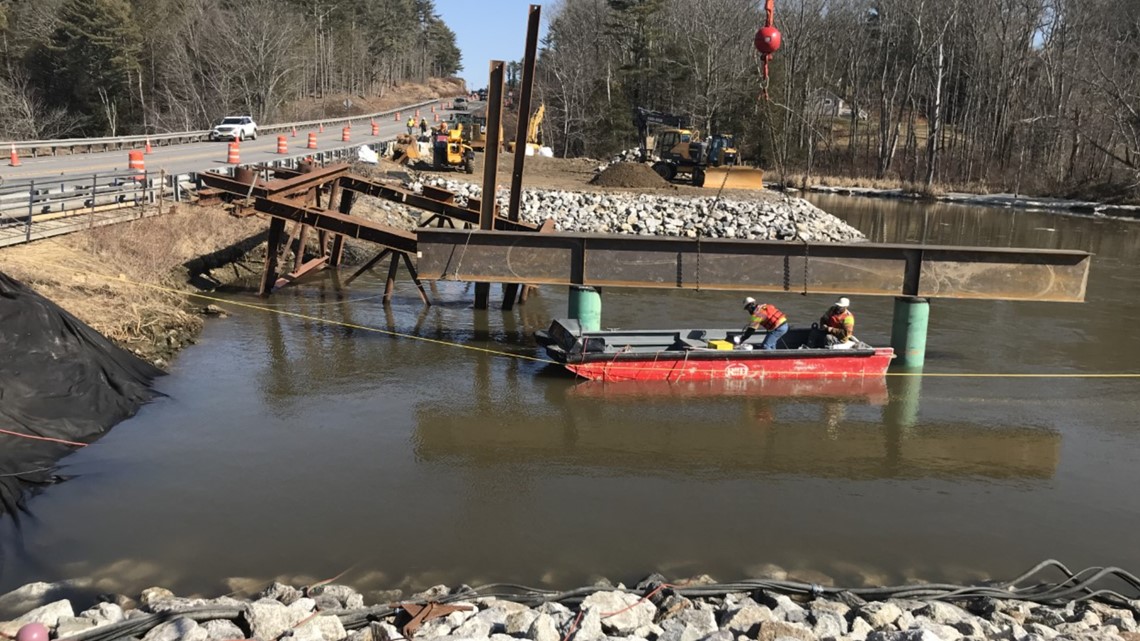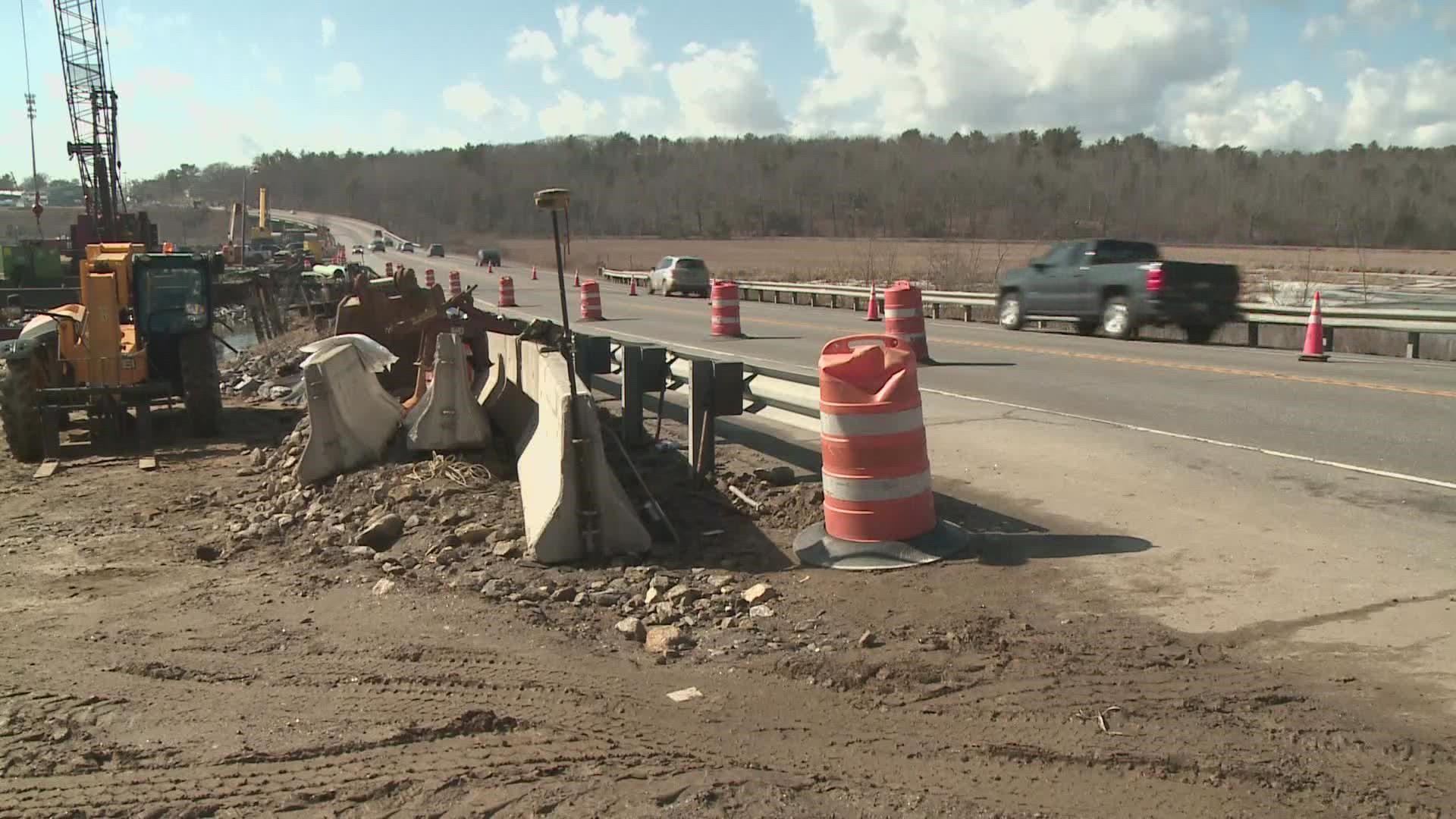WOOLWICH, Maine — As a vast crane finished setting piles in the water, a construction crew on a small float began welding.
How big a project is it, NEWS CENTER Maine asked project superintendent Peter Garrett.
"Kind of a medium-sized project, $35 million," Garrett said.
Garrett has worked on many projects for Reed & Reed Construction, some of them outside of Maine. The contractor is known, in particular, for building bridges and wind turbines, and those jobs can be in or out of state.
Garrett said it's nice to work in his and the company's home state. In this case, it's also Reed & Reed's hometown. The company headquarters is just a few miles away.
The project is complex, as well as costly. It replaces the so-called Station 46 bridge that carries U.S. Route 1 over railroad tracks and a salt marsh. But that's just part of it.
"We're going to build 1,400 feet of road, a 750-foot bridge, a 150-foot bridge, and detour the traffic on that in July or August. Then we will be able to close Route 1 in August," he said.
Garrett and Maine DOT Project Manager Devan Eaton said the temporary roadway would be as wide as the current one. And once the detour is open, traffic should keep moving smoothly, though more slowly than usual, because speed limits will be reduced.


The project is complicated by the salt marsh and the water that flows in and out of it. This section of U.S. Route 1 occasionally floods on extra-high tides. Climate change presents an even more significant threat of flooding than already exists, with sea levels expected to rise four feet over the next hundred years. That's why the road is being raised at least five feet and more in some places, according to Eaton.
Raising that road poses a challenge for Reed and Reed because of the salt marsh. Seawater from the Sassanoa River flows in and out of the marsh every day, and that flow will increase once the smaller of the new bridges replaces old, outdated culverts.
Garrett said they have to make sure the road remains stable and doesn't sink under traffic pressure.
To achieve that, they will use technology, gravel, and time.
Garrett said they would install more than 100 wick drains, perforated tubes driven as much as 135 feet into the clay that underlies the marsh. The drains will be driven in along the roadway's path, which will then be buried in 11 feet of gravel or other fill material.
It will remain in place for a year, the contractor said.
"And everybody will drive by and wonder what we're doing. But that weight of the extra material will squeeze the water out of the subsoil. It will come up through those wick drains and out into the marsh. And that will pre-settle the road so that when the new road is built, it will never settle again."
While the road settles, Reed & Reed's crew will build the new bridges.
With the year-long wait to build the road and the complexity of the bridges, the project won't be quick. Construction is scheduled to be completed by November 2024.
That means the temporary bridges and roads have to be as solid and durable as the finished ones essentially.
It will be safe, the same size road as what's currently there, and one Eaton said should keep traffic flowing.
"Our ultimate goal during design was to keep one lane of traffic in each direction, as is currently on Route 1, so that's where the temporary roadways and bridge come from," Eaton said.
The crew is already placing the steel for the smaller temporary bridge, with work on the larger one to begin after that.

